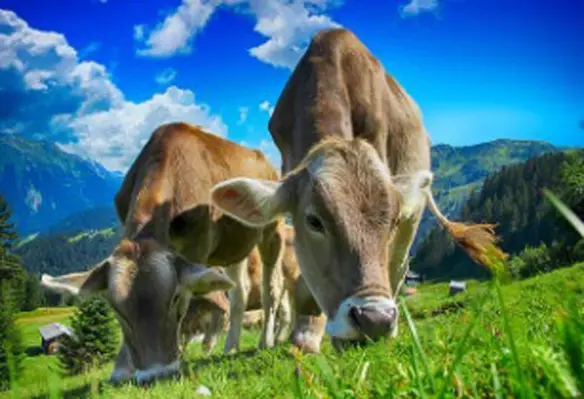Comparison of the greenhouse gases produced by lab-grown and farm-raised beef in the current energy system suggests that the benefits of reducing methane could be outweighed by increased CO2, according to a study from the livestock, environment and people (LEAP) programme at the Oxford Martin School
During the study, the climate-change impact of several production methods for lab-grown and farmed beef was assessed accounting for the differing greenhouse gases produced.
The study looked at how much the gases impact temperature rises and how long they persist in the atmosphere to understand the warming impact of lab-grown and farmed beef.
Their new projections reveal that replacing cattle with cultured meat may not be a simple replacement of high-impact with low-impact. Over the long term, cultured meat production methods requiring large energy inputs could increase global warming more than some types of cattle farming if energy systems remain dependent on fossil fuels. Research on better ways of producing cultured meat with less impact is a priority.
The culture club
The study found that some projections for the uptake of particular forms of cultured meat could indeed be better for the climate, but others could actually lead to higher global temperatures in the long run. Published in Frontiers in sustainable food systems, their findings highlight that the climate impact of cultured meat production will depend on its energy demands and the availability of low-carbon energy sources.
“There has been a great deal of public interest in cultured meat recently, and many articles highlight the potential for substituting cattle beef with cultured meat to provide an important climate benefit,” explained lead author Dr John Lynch. “We show that it is not yet clear whether this is the case, partly because of uncertainties about how cultured meat would be produced at scale. An important issue in comparing farmed and cultured beef is that the different warming impacts of greenhouse gases are also not well accounted for in the standard measure used in carbon footprints.”
Switching methane for CO2
“Cattle are very emissions-intensive because they produce a large amount of methane from fermentation in their gut,” advised study co-author Raymond Pierrehumbert, Halley professor of Physics at the University of Oxford.
“Methane is an important greenhouse gas, but the way in which we generally describe methane emissions as ‘CO2 equivalent’ amounts can be misleading because the two gases are very different. Per tonne emitted, methane has a much larger warming impact than carbon dioxide, however, it only remains in the atmosphere for about 12 years whereas carbon dioxide persists and accumulates for millennia. This means methane’s impact on long-term warming is not cumulative and is impacted greatly if emissions increase or decrease over time.”
Sustainable labriculture depends on clean energy and new tech
The environmental benefits of lab-grown meat are a powerful imperative to continue and expand labriculture research, and especially to develop ways of producing cultured meat as efficiently as possible.
The study also highlights that both cultured meat and cattle farming have complex inputs and impacts that need to be considered in fully appreciating their effect on the environment. For example, creating more grazing land for cattle often results in significant deforestation that could greatly increase the CO2 footprint of cattle systems (but can prove difficult to standardise in emissions footprints), while producing food in urban laboratories could free up land for storing CO2 or other purposes.
Lynch concluded, “The climate impacts of cultured meat production will depend on what level of sustainable energy generation can be achieved, as well as the efficiency of future culture processes.”
To get more information, please click on the link of the study





